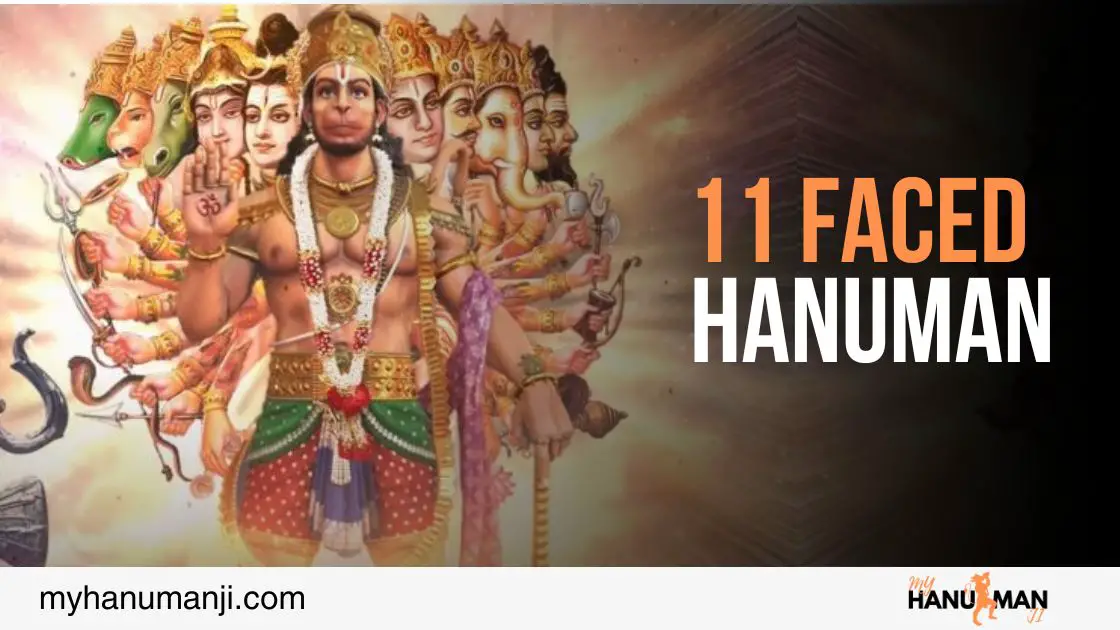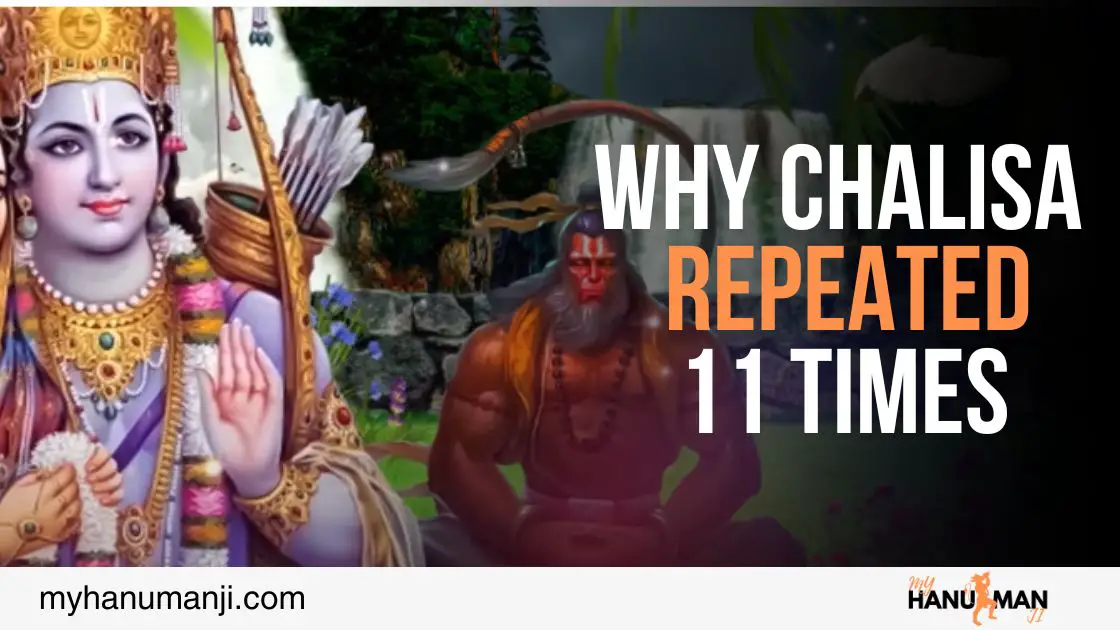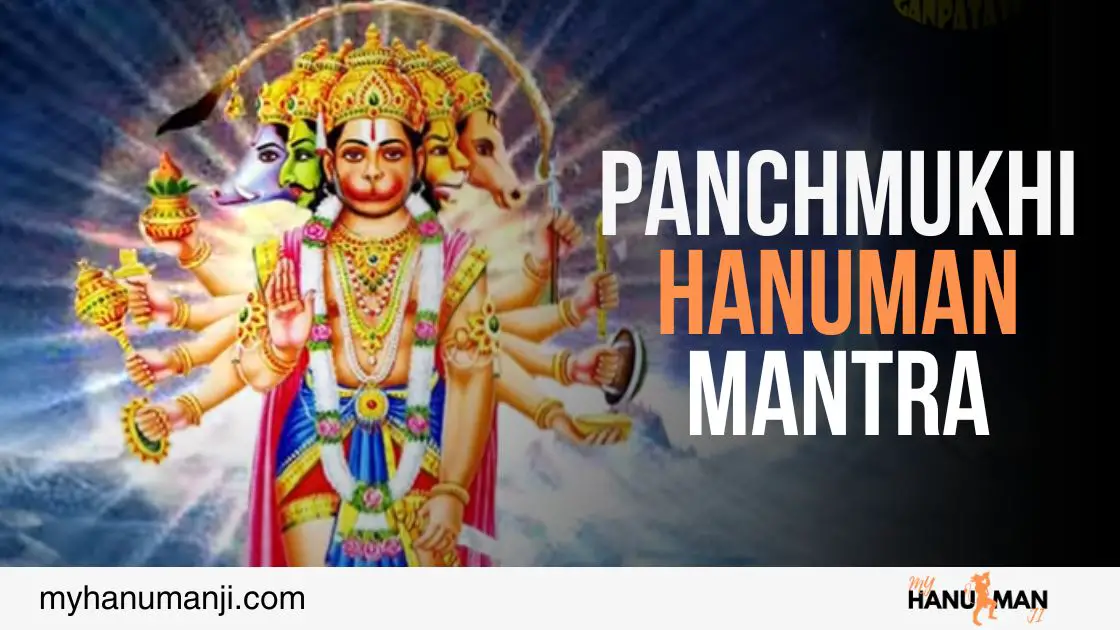It proves the devotion of hanuman ji if they interested to know, “What are the 11 faces of Hanuman?” . In this comprehensive blog, we will delve into the significance, symbolism, and legends associated with each face of Hanuman. Join me as we embark on a spiritual journey through the captivating world of the mighty Monkey God.
The Symbolism of Multiple Faces
Hanuman, known for his unwavering devotion, strength, and courage, is often depicted with multiple faces in Hindu art and iconography. Each face represents a specific aspect of his divine nature and serves as a symbol of his multifaceted character. Let us now explore the 11 faces of Hanuman and their respective meanings.
1. Panchmukha Hanuman (Five-Faced Hanuman)
Panchmukha Hanuman is one of the most popular depictions of Hanuman with five faces. Each face represents a different deity:
- East Face: This face represents Lord Hanuman himself, symbolizing his divine presence and power.
- South Face: The south face represents Lord Narasimha, the lion-headed avatar of Lord Vishnu. It signifies protection and fearlessness.
- West Face: The west face represents Lord Varaha, the boar-headed avatar of Lord Vishnu. It symbolizes strength and perseverance.
- North Face: The north face represents Lord Garuda, the divine eagle and vehicle of Lord Vishnu. It signifies speed and agility.
- Upward Face: The upward face represents Lord Hayagriva, the horse-headed deity associated with knowledge and wisdom.
Panchmukha Hanuman is revered for his ability to protect devotees from all directions and bestow blessings upon them.
2. Ekadasha Mukha Hanuman (Eleven-Faced Hanuman)
Ekadasha Mukha Hanuman is a rare depiction of Hanuman with eleven faces. Each face represents a different deity or form of Lord Hanuman himself. The eleven faces symbolize:
- Hanuman: The central face represents Lord Hanuman, embodying his divine presence and strength.
- Narasimha: The lion-headed face represents Lord Narasimha, signifying protection and fearlessness.
- Varaha: The boar-headed face represents Lord Varaha, symbolizing strength and determination.
- Garuda: The eagle-faced face represents Lord Garuda, representing speed and agility.
- Hayagriva: The horse-faced face represents Lord Hayagriva, associated with knowledge and wisdom.
- Agni: The fire-faced face represents Agni, the deity of fire, symbolizing purification and transformation.
- Kurma: The tortoise-faced face represents Lord Kurma, the turtle avatar of Lord Vishnu, symbolizing stability and patience.
- Nandi: The bull-faced face represents Nandi, the divine vehicle of Lord Shiva, signifying devotion and strength.
- Yama: The buffalo-faced face represents Yama, the god of death, symbolizing the cycle of life and death.
- Varuna: The fish-faced face represents Varuna, the deity of water, symbolizing fluidity and adaptability.
- Vayu: The monkey-faced face represents Vayu, the wind god, symbolizing swiftness and vitality.
Ekadasha Mukha Hanuman represents the various cosmic forces and divine aspects embodied by Hanuman.
3. Chaturdasha Mukha Hanuman (Fourteen-Faced Hanuman)
Chaturdasha Mukha Hanuman is an extraordinary depiction of Hanuman with fourteen faces. Each face represents a different deity or form of Lord Hanuman. The fourteen faces symbolize:
- Hanuman: The central face represents Lord Hanuman, embodying his divine presence and power.
- Narasimha: The lion-headed face represents Lord Narasimha, signifying protection and fearlessness.
- Varaha: The boar-headed face represents Lord Varaha, symbolizing strength and determination.
- Garuda: The eagle-faced face represents Lord Garuda, representing speed and agility.
- Hayagriva: The horse-faced face represents Lord Hayagriva, associated with knowledge and wisdom.
- Agni: The fire-faced face represents Agni, the deity of fire, symbolizing purification and transformation.
- Kurma: The tortoise-faced face represents Lord Kurma, the turtle avatar of Lord Vishnu, symbolizing stability and patience.
- Nandi: The bull-faced face represents Nandi, the divine vehicle of Lord Shiva, signifying devotion and strength.
- Yama: The buffalo-faced face represents Yama, the god of death, symbolizing the cycle of lifeand death.
- Varuna: The fish-faced face represents Varuna, the deity of water, symbolizing fluidity and adaptability.
- Vayu: The monkey-faced face represents Vayu, the wind god, symbolizing swiftness and vitality.
- Kubera: The dwarf-faced face represents Kubera, the god of wealth, symbolizing abundance and prosperity.
- Brahma: The bearded face represents Lord Brahma, the creator of the universe, symbolizing creation and divine knowledge.
- Indra: The elephant-faced face represents Lord Indra, the king of gods, symbolizing power and authority.
- Surya: The sun-faced face represents Lord Surya, the sun god, symbolizing radiance and illumination.
- Chandra: The moon-faced face represents Lord Chandra, the moon god, symbolizing tranquility and serenity.
Chaturdasha Mukha Hanuman encompasses a wide range of divine qualities and cosmic energies, making him a powerful and all-encompassing deity.
Conclusion
In conclusion, What are the 11 faces of Hanuman or five faces of Hanuman of Hanuman comes to one thing. Representation of diverse divine aspects and cosmic energies embodied by the mighty Monkey God. Whether it is the Panchmukha Hanuman, Ekadasha Mukha Hanuman, or Chaturdasha Mukha Hanuman, each depiction showcases a unique combination of deities and forms, symbolizing the vastness of Hanuman’s power and presence. As devotees, we can draw inspiration from these faces and seek their blessings to navigate through life’s challenges and embrace the divine qualities they represent.
Remember, Hanuman is not just a deity with extraordinary physical strength, but also a symbol of unwavering devotion, loyalty, and selflessness. May the 11 faces of Hanuman guide and inspire us on our spiritual journey, helping us discover our own divine potential and inner strength.




